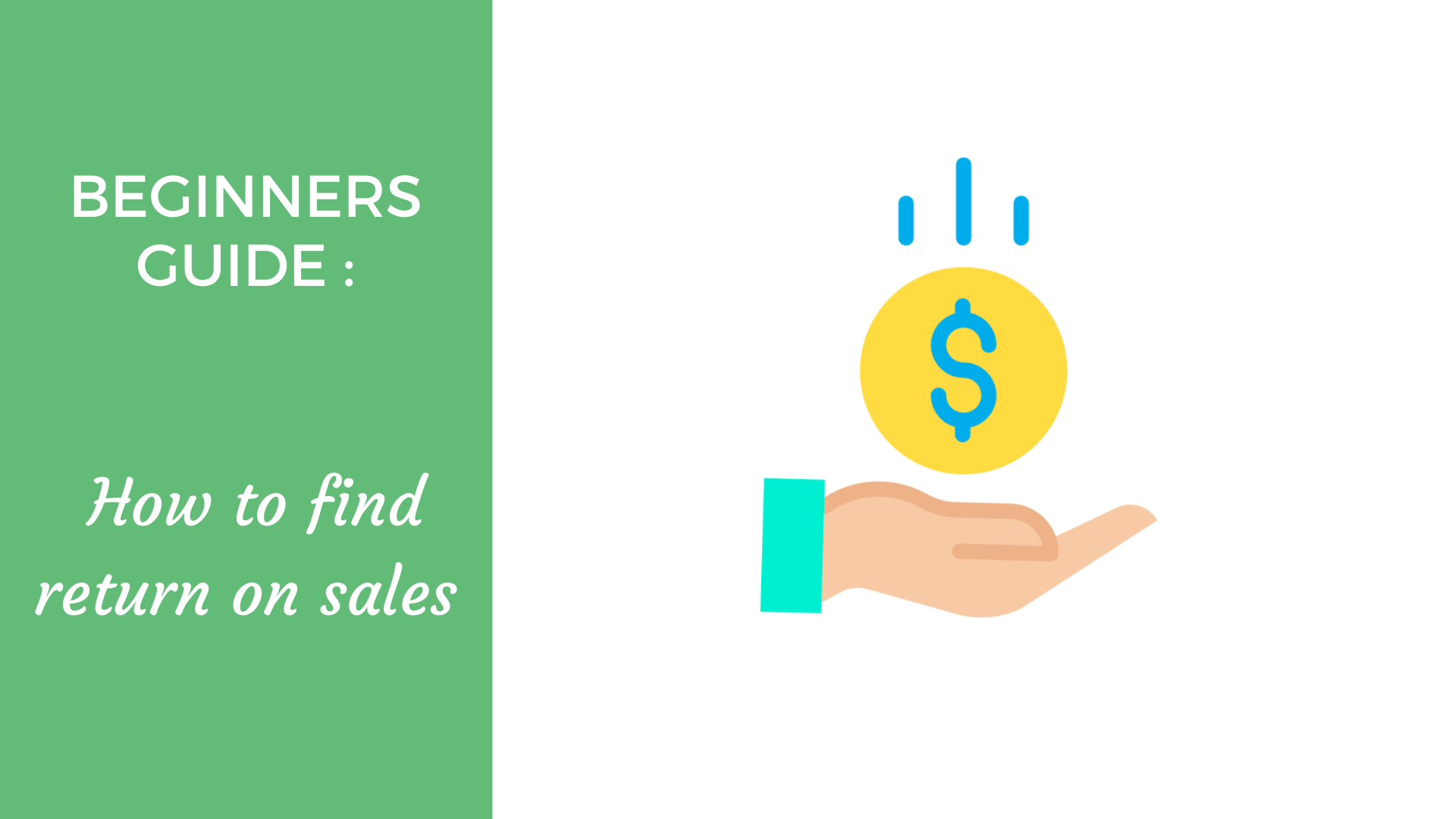If you're looking to grow your business, you need to keep a close eye on your return on sales. Learn how to find the ROI before it grows too slowly or disappears altogether!

Before diving right into the topic of how to find return on sales, let's just learn some basics.
Return on sales is the amount of money your company makes per sale. It can be calculated using income and expenses.
If you're planning a big marketing campaign, then it's important to know how much return on sales you'll receive.
Many businesses also use return on sales as key criteria when they are choosing which product to advertise and sell. Therefore, it's crucial to understand the ROI.

The formula for calculating return on sales is as follows:
Net income/Total revenue equals profit margin % or simply Profit = Net Income + Expenses - Operating expenses/Revenue amount = Return On Sales.
In other words, your resulting budget from your annual income needs to be divided by the sum of all revenues sold (sales). If this ratio turns out 1:1, you're doing great! If it's higher than 1:1, then your company can make a profit.

One of the ways to find a return on sales is by conducting a SWOT analysis.
This entails looking at your strengths, weaknesses, opportunities and threats (SWOT).
Another way to determine the profitability of your company is by calculating your company's net margins.

The formula for this is:
Net Margin = Sales Repurchased + Gross Profit - Expenses
Keep in mind that you can only calculate net margins if your company manufactures products and not services.
If your company offers services, you will have to use another method to calculate its profitability.
Another measurement by which business owners assess the profitability of their entities is the return on investment (ROI), also known as earned rate.
There are many metrics that can be used to measure return on sales, but the most popular are repeat purchase rate and lifetime value.
These metrics help you to find where your customers spend their money and allow you to tailor your marketing efforts by understanding what your customers want.
Repeat purchase rate gives you the percentage of customers who buy additional products, services or other offerings from your company.
Therefore, it primarily tells you what distinguishes more profitable acquisitions and service/product purchases compared with less cost-effective ones.
In addition to time metrics using sales tracker software can provide all required information needed in return on sale analysis In this case customer survey is carried out where customers consider customers' experience during their buying process; recommendation of a new product, service or company; contract signature etc.
Measuring the customers’ experience provides insight into how important every action of a customer is and reveals which elements are considered as crucial for making an overall favourable buying impression.
Similarly, measuring cost metrics on products helps to determine the potential return on investment (ROI) in each domain by calculating financial aspects such as cost per unit sold (CPS), gross margin percentage (%), total

It is important to know how much money you can expect to make on your sales because without that information, it's almost impossible to plan future revenue.
Once you have the data, you can use this data to increase your revenue and return on investment.
I am sure now you know how to find return on sales using different methods mentioned in this blog.
That's all for now! See you later with a different topic! Till that keep the conversation going in the comment section below.